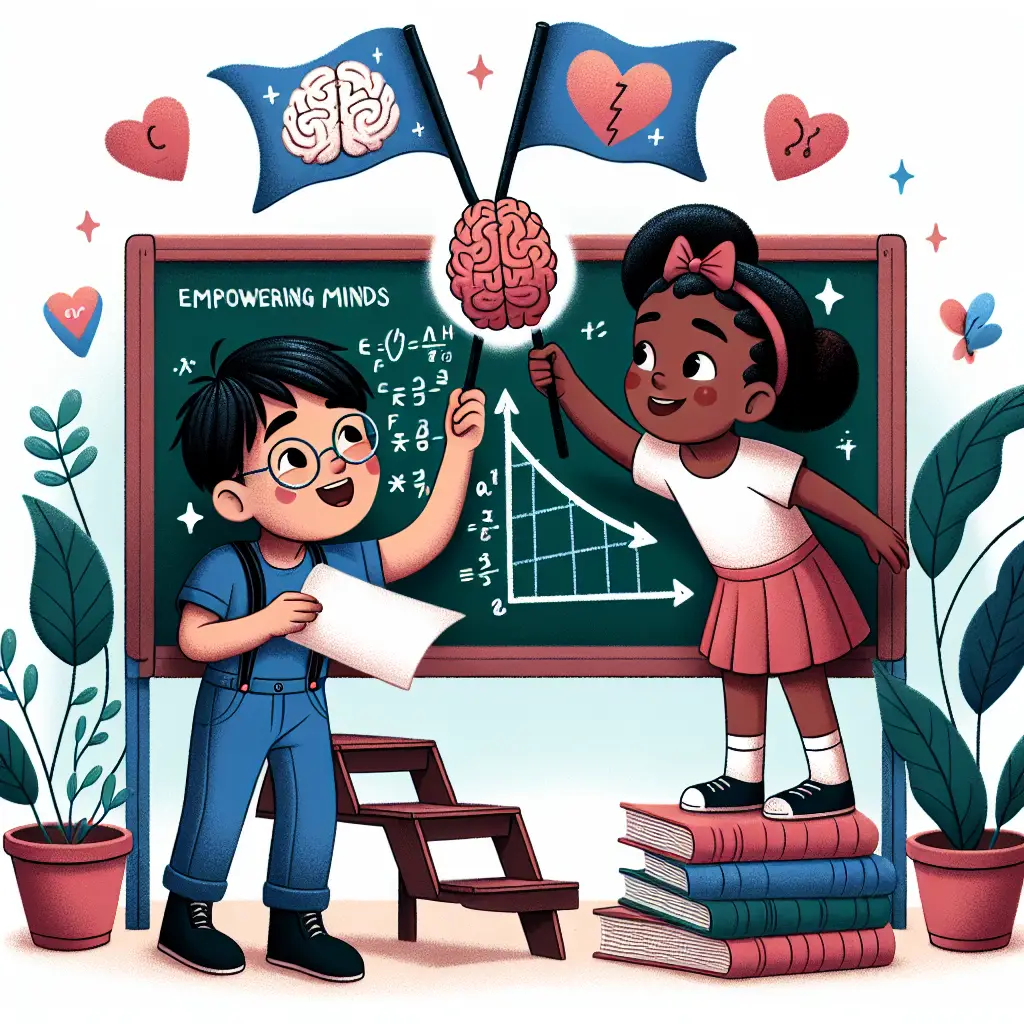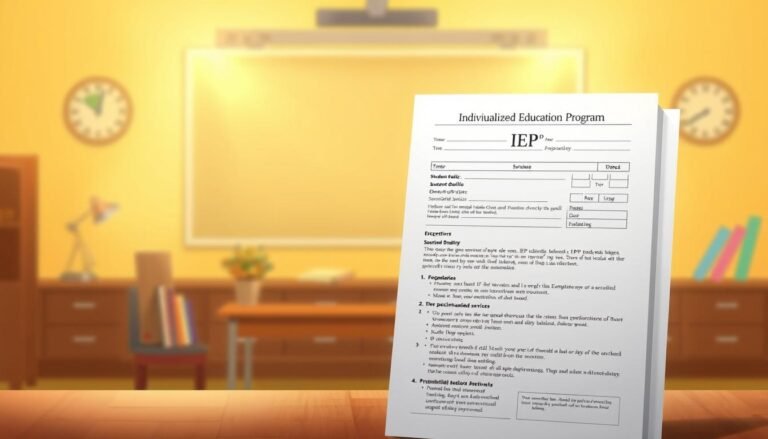
Empowering Minds: Essential Strategies for Boosting Self-Esteem in Children with Learning Disabilities
Introduction
Imagine walking into a classroom filled with bright, eager faces, yet among them sits a child whose eyes reveal a deep-seated struggle. For many children with learning disabilities, school is not just about academics; it’s a battleground for self-esteem. These children often grapple with feelings of inadequacy and frustration, as the traditional educational framework may not cater to their unique needs. This underscores the urgency of Empowering Minds: Strategies for Boosting Self-Esteem in Children with Learning Disabilities. By fostering self-esteem in these children, we do not merely enhance their academic performance; we nurture their potential to thrive in every facet of life.
In this article, we delve into effective strategies for enhancing self-esteem in children with learning disabilities—strategies that empower not only their minds but their spirits as well.
Understanding Learning Disabilities and Their Impact on Self-Esteem
What Are Learning Disabilities?
Learning disabilities (LD) refer to a range of disorders affecting the acquisition, retention, and utilization of skills, including reading, writing, and mathematics. These are not indicative of intelligence; rather, they highlight the need for different teaching methods.
The Link Between Learning Disabilities and Self-Esteem
Children with learning disabilities often experience challenges that transcend academics. The frequent encounters with failure, whether in reading aloud or completing homework, can lead to a diminished sense of self-worth. The emotional impact is profound; research shows that children with learning disabilities are at a higher risk for anxiety, depression, and behavioral issues.
Case Study: Jack’s Journey
Jack, a 10-year-old diagnosed with dyslexia, frequently found himself sidelined in classrooms. His peers would read fluently while he struggled, leading him to believe he was less capable. This belief spiraled into social withdrawal and reluctance to engage. However, with targeted intervention focusing on building his skills in a supportive environment, he began to experience small victories that gradually boosted his self-esteem. This journey underscores how positive reinforcement and tailored strategies can change lives.
Strategies for Boosting Self-Esteem
1. Promote a Growth Mindset
A growth mindset, a concept popularized by psychologist Carol Dweck, is crucial for children facing learning challenges. This mindset posits that abilities can be developed through dedication and hard work.
- Implementing Growth Mindset Activities:
- Resilience Workshops: Encourage children to share and discuss personal challenges.
- Celebrate Effort Over Results: Provide praise for effort exerted rather than simply outcomes.
2. Foster a Supportive Environment
Creating a nurturing atmosphere both at home and in school is essential. It requires a collective effort from teachers, parents, and peers.
- Actionable Steps:
- Establish Safe Spaces: Designate areas in classrooms where children can seek help.
- Encourage Peer Support: Implement buddy systems wherein children help each other.
3. Set Realistic Goals
Setting achievable, short-term goals empowers children to experience success, thus enhancing their self-esteem.
- Goal-Setting Techniques:
- SMART Goals: Encourage goals that are Specific, Measurable, Achievable, Relevant, and Time-bound.
- Visual Progress Charts: Utilize charts to allow children to visualize their successes.
4. Provide Tailored Instruction
Differentiated instruction recognizes that students learn in various ways and at different paces.
- Strategies for Tailoring Instruction:
- Utilize Technology: Employ educational software designed for diverse learning abilities.
- Multi-Sensory Instructions: Engage different senses to reinforce learning (e.g., using visual aids).
5. Celebrate Achievements
Recognizing and celebrating even the smallest of successes can greatly uplift children’s self-esteem.
- Ideas for Celebration:
- Recognition Ceremonies: Hold monthly gatherings to acknowledge individual progress.
- Personal Achievement Boards: Create boards in the classroom where children can display their accomplishments.
6. Engage in Social Skills Development
Strong social skills enhance a child’s interaction with peers and boost confidence.
- Activities to Enhance Social Skills:
- Role-playing Games: Facilitate scenarios that allow children to practice social interactions.
- Group Projects: Encourage collaborative learning to build teamwork skills.
7. Involve Parents and Caregivers
Engaging parents in the educational process enhances consistency and support for children.
- Parent-Teacher Collaboration:
- Regular Updates: Keep parents informed about their child’s progress.
- Workshops for Parents: Educate parents on strategies to support their child’s learning at home.
Visual Aids and Tables
Boosting Self-Esteem: Common Strategies Overview
| Strategy | Description | Expected Outcome |
|---|---|---|
| Promote Growth Mindset | Encourage resilience and adaptability | Increases willingness to face challenges |
| Foster Supportive Environment | Create a safe and nurturing space | Enhances emotional security |
| Set Realistic Goals | Establish attainable objectives | Builds confidence through success |
| Provide Tailored Instruction | Customize teaching methods to fit individual needs | Improves learning outcomes |
| Celebrate Achievements | Recognize and value accomplishments | Boosts self-worth |
| Engage in Social Development | Teach and practice social skills | Improves peer relationships |
| Involve Parents | Strengthen home-school connections | Creates a consistent support system |
Case Study: Tim’s Transformation
Tim, a 12-year-old with Attention-deficit/hyperactivity disorder (ADHD), struggled with focus and often felt alienated from his peers. His teachers implemented a tailored plan emphasizing consistent check-ins and positive reinforcement. Tim’s subsequent increase in focus led to improved grades and a newfound confidence. This showcases how collaborative efforts can yield remarkable outcomes, reinforcing the necessity of Empowering Minds: Strategies for Boosting Self-Esteem in Children with Learning Disabilities.
Conclusion
Fostering self-esteem in children with learning disabilities is a multifaceted approach that requires collaboration, creativity, and compassion. With Empowering Minds: Strategies for Boosting Self-Esteem in Children with Learning Disabilities, we equip children with the tools they need to face challenges head-on and build a positive self-image.
In a world that often defines worth through the lens of academic performance, it’s crucial to remember that a child’s value transcends their scores. By implementing these strategies, we nurture resilient, confident learners prepared to navigate their unique journeys.
FAQs
1. What are the most common types of learning disabilities?
Learning disabilities can include dyslexia (reading difficulties), dyscalculia (math challenges), dysgraphia (writing struggles), and ADHD (attention-related issues).
2. How can parents support their child’s self-esteem?
Parents can support their child’s self-esteem by celebrating small successes, providing a listening ear, and encouraging their child to be open about struggles.
3. What role do teachers play in boosting self-esteem?
Teachers can create an inclusive classroom environment, recognize individual achievements, and adapt teaching methods to meet the diverse needs of students.
4. Are there any exercises that help promote a growth mindset?
Yes! Activities like discussing personal challenges, reading stories about perseverance, and reflecting on past successes can help cultivate a growth mindset.
5. How important is peer support in the journey of children with learning disabilities?
Peer support is vital as it fosters social connections, allows children to share experiences, and helps reduce feelings of isolation, significantly boosting self-esteem.
In summary, by focusing on Empowering Minds: Strategies for Boosting Self-Esteem in Children with Learning Disabilities, we can make a transformative difference in the lives of many, allowing these children to shine brightly amid their challenges.
















